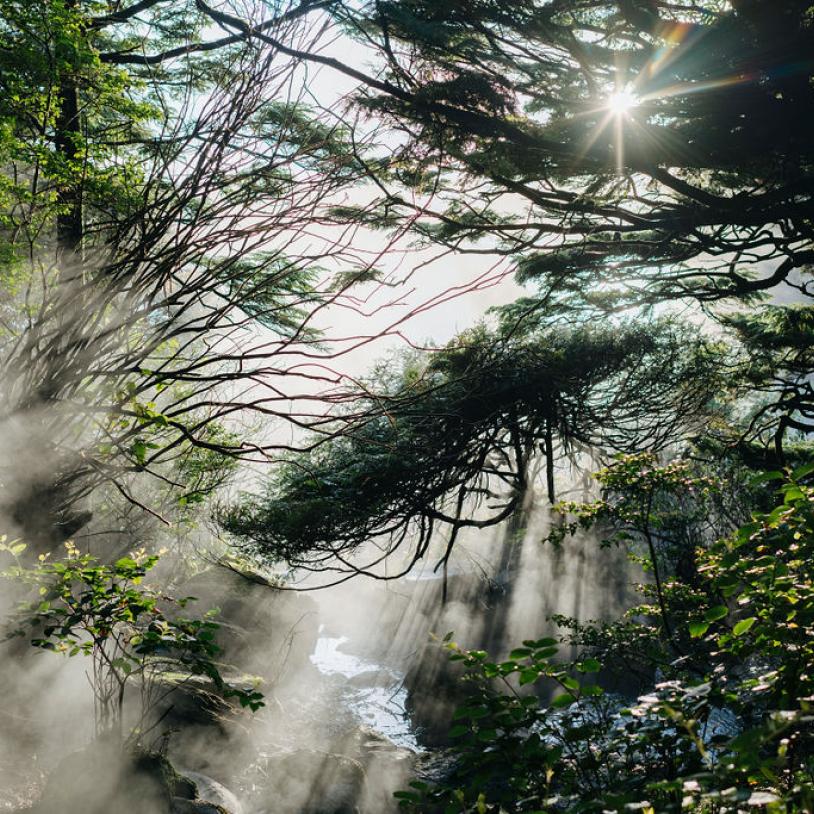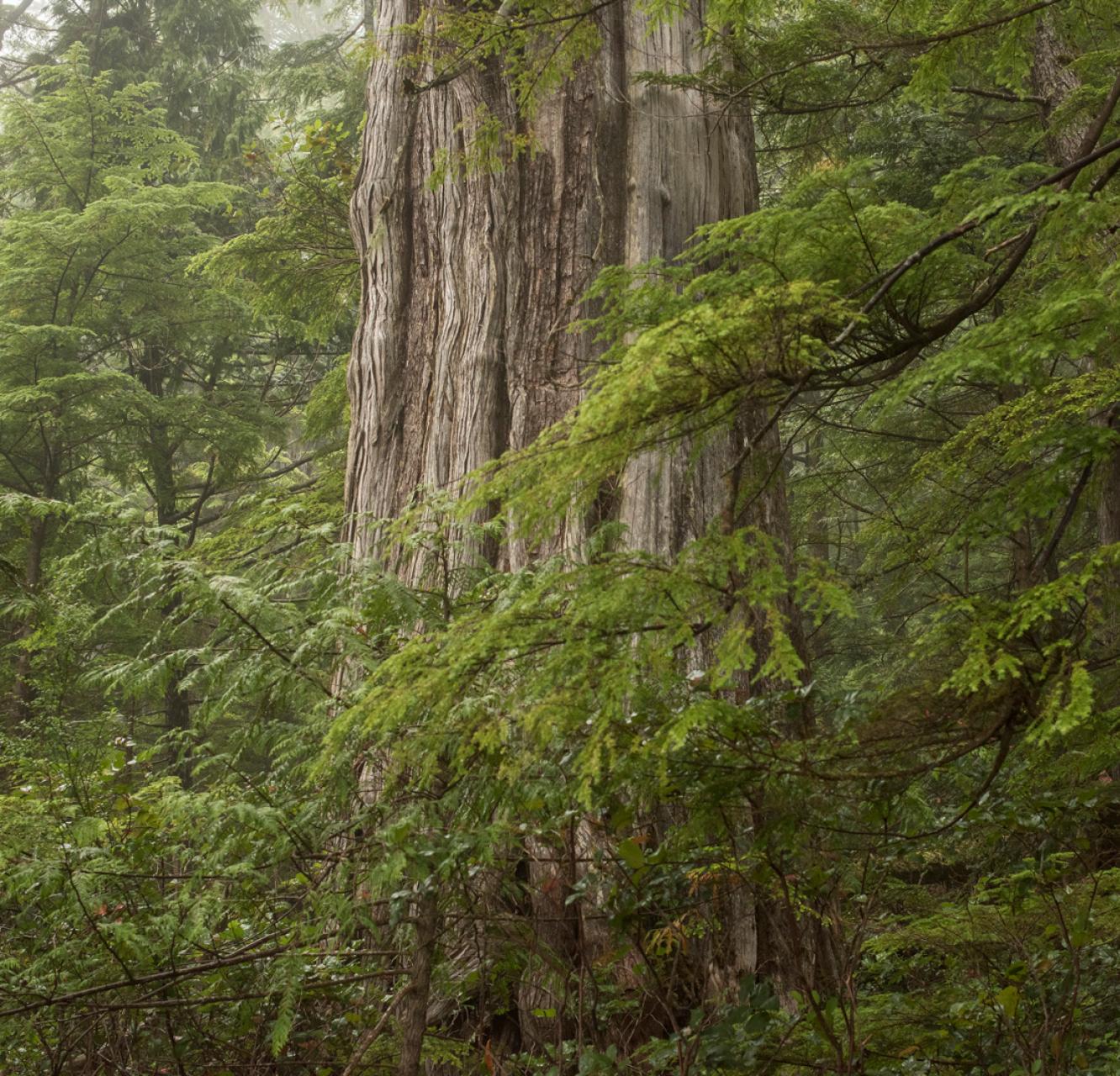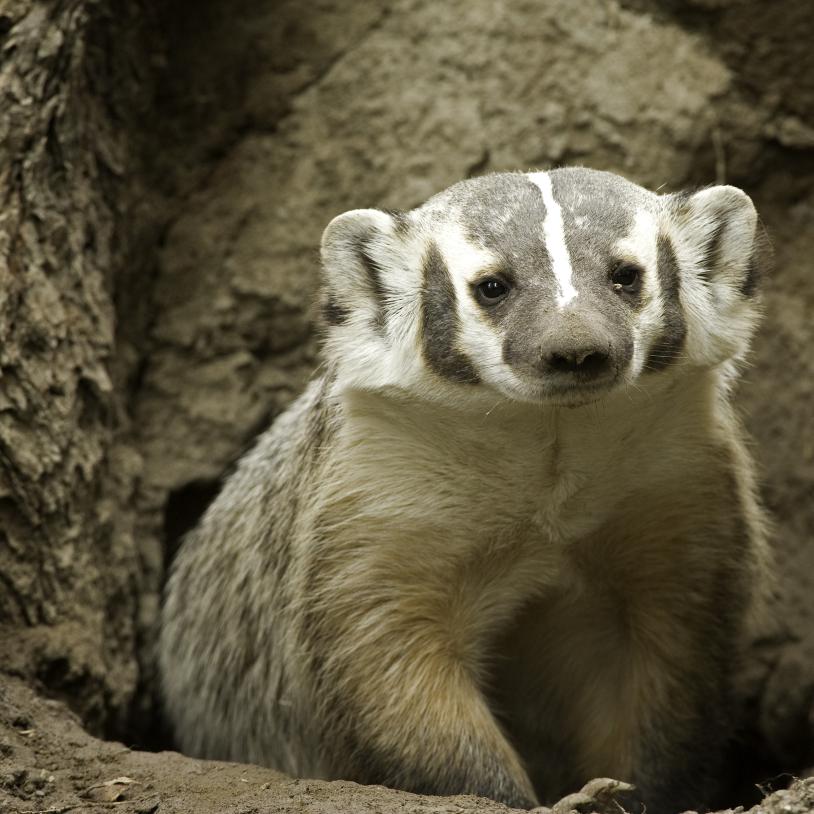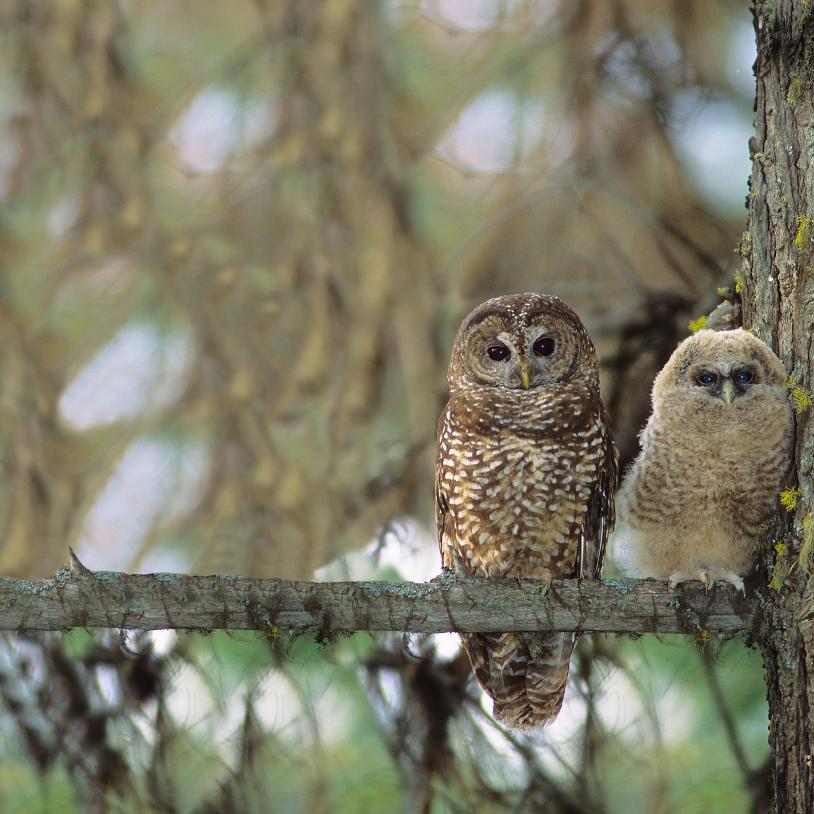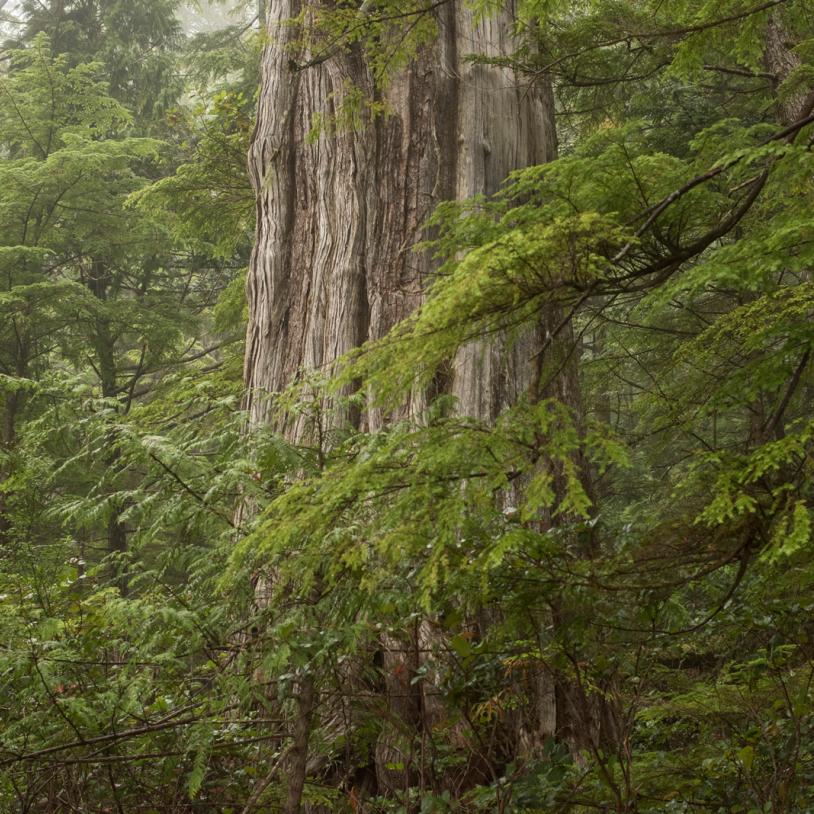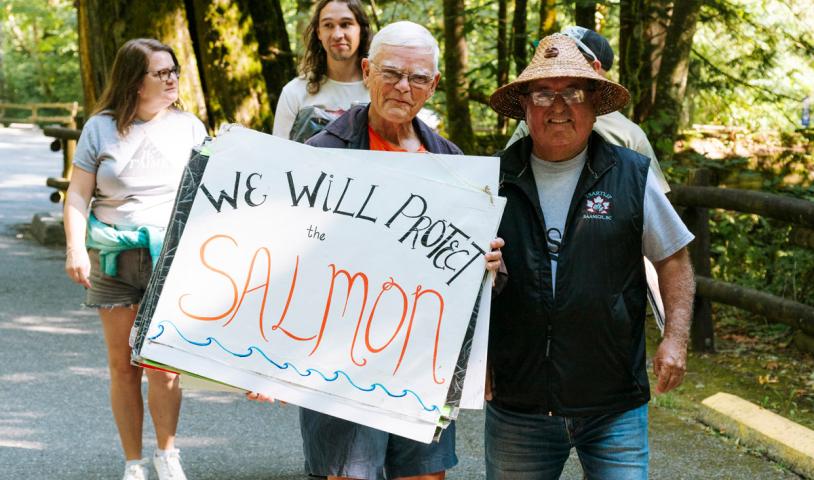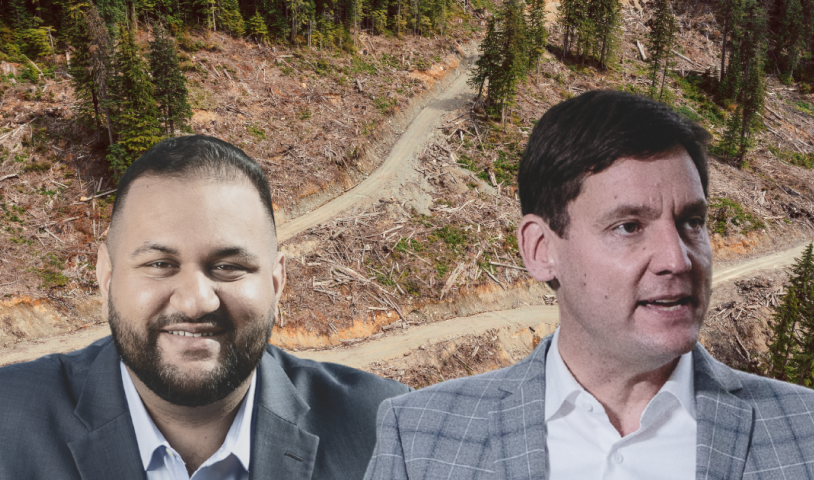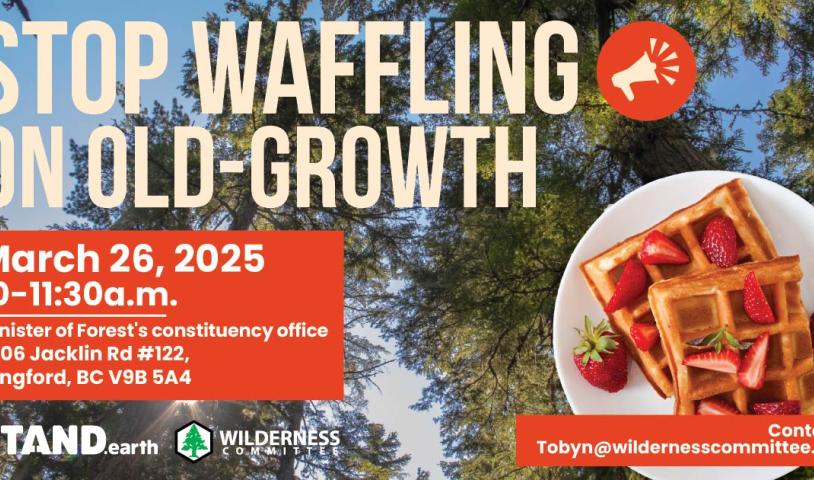There is only one Nanoose Bay Forest
Monday, November 14, 2011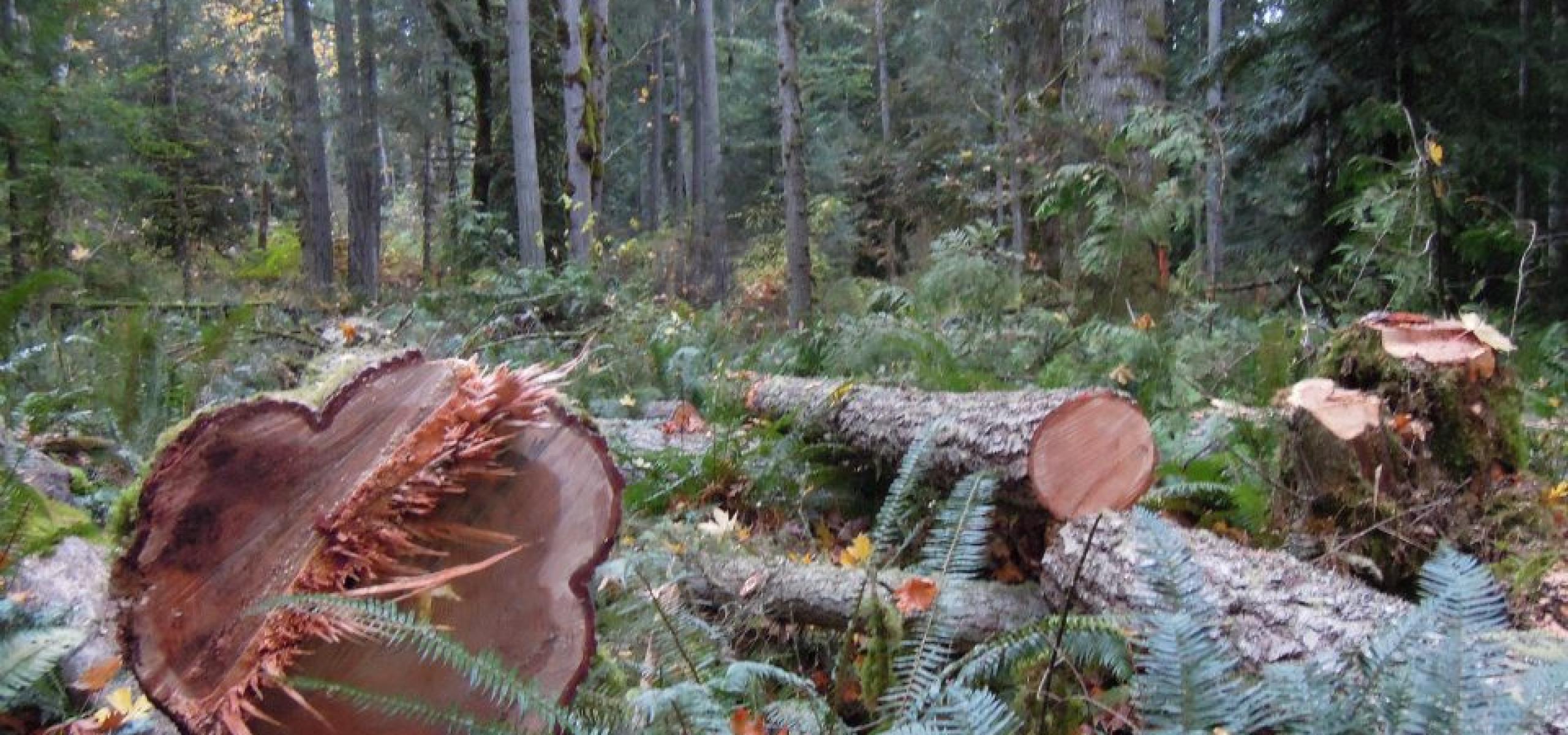
I was worried that 8am might be too early to meet. I figured that I would get to the coffee shop and no one else would show up – luckily I was wrong. Five other people showed up with boots, rain jackets and a quiet energy.
We were off to check out The Nanoose Bay Forest, also known as DL 33, located about half way up Vancouver Island. We hopped into the van and began our trip. On our way there Wilderness Committee campaigner Tria Donaldson went into detail about where we were going. The Nanoose Bay Forest is a 64-hectare forest of Coastal Douglas-fir (CDF) that has been at the heart of a two year campaign to save some of the last old growth in this ecosystem found anywhere in the world. The 256,800 hectare Coastal Douglas-fir ecosystem is only found on the east of Vancouver Island and a small part of the Lower Mainland and Washington State. The CDF has the greatest density of species in BC of provincial and global concern, has experienced the highest level of ecosystem conversion to human development (49 percent), and almost all of its forests have been logged since European contact with only about 1 per cent remaining as old growth (Forest Practices Board, “Conservation of Imperiled Coastal Douglas Fir Ecosystem,” June 2010).
Most of the CDF on Vancouver Island is held by private lands but DL 33 is unique because it sits on Crown land, making it one of the few pieces of land where it’s easier for government to actually protect. Sadly this trip wasn’t to go check out the red listed species, or to look at the towering Grand Firs. This trip was to check out the damage done by chainsaws that had started only two days prior.
When we arrived we were greeted by the locals who had heard the first veteran tree fall. There are about 100 veteran or old-growth trees left in this forest. As our guides took us out into the forest, we passed the riparian zones that drain out to local salmon bearing streams. The combination of mature and old growth surrounding these wetlands is another aspect of what makes the forest particularly ecologically valuable, providing unique niches for plants and animals to survive.
A short distance from the riparian zone we found the first cut. The company has stated that they are not cutting any of the old growth, something the giants lying on the ground would likely dispute. Our guides took us further in to the forest where we found Cedars and Douglas firs trees over 200 years old that had been cut down.
From there we were going to check out a grove of veterans but, all of the sudden, it started to hail, the wind picked up, branches started to break and a tree not far from us was blown down. Needless to say, we didn’t stay there for very long. The damage from this storm was minimal, but once logging starts, the remaining trees will face a higher rate of blow down.
We went back to one of the guide’s houses, dried off and had some tea before beginning our journey back to Victoria.
For now, local activists have prevented the damage from becoming too extensive, but it’s only a matter of time before it is gone.
The Snaw’Naw’As First Nation hold the timber license on the land and the band, rightfully so, wants to provide jobs for its members. The provincial government needs to step in and make a land swap happen so that this area can be protected and the residents of the Snaw’Naw’As can still earn a living. There are no other Nanoose Bay forests and it will only take a few days before this one is gone.
The time for the BC government to take action is now and we need your help.
Please take a few minutes to send a letter to Premier Christy Clark and the Minister of Forests, Lands and Natural Resource Operations, Steve Thomson, asking them to save this ecologically valuable piece of land.
Also, check out the video of our trip.
James Coccola
Public Outreach Coordinator, Victoria Office
